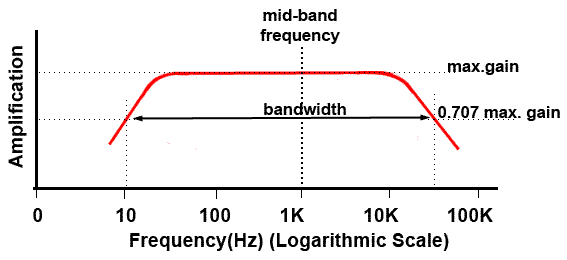> Guitar can go down till 82Hz and a Bass till 41Hz
... You should distinguish low-power frequency response from Power Response. Many push-pull hi-fi OTs are flat to 4Hz at the 1 Watt level, but won't go below 50Hz at full power without making bent waves. ... I think many-many guitar OTs have OTs that won't make full power below 150Hz. Others are clearly good to 40Hz even at high power.
This thread needs pictures.

The two trapezoids in the picture are 2 different OT's. The horizontal axis is frequency, while the vertical axis is power through-put.
Any transformer used well below its rated power with have wide bandwidth. As power through-put is increased, bass response is constricted by the core size (and saturation at some power level below the full rated power), while treble is constricted by winding capacitance.
Transformers rated for full 20Hz-20kHz at full power (like Hammond transformers) are much bigger than 60's guitar amp transformers rated for the same power, which themselves are much bigger than 50's Fender transformers which seemingly carry the same power (e.g., for a 2x 6L6 amp).
The net effect is that the modern Hammond OT seems very solid and hi-fi compared to a typical guitar amp transformer. It might also seem "harsh" especially under distortion compared with a tweed OT which is both restricting bass and rolling off some of the treble hash of a distorted signal.
I imagine designing a transformer will not be a "once and done" chore. Especially for distorted guitar, it may be "build, evaluate, modify, revaluate, build, ..."
FWIW, the same type of trapezoid exists with amplifier gain & frequency response. When cutting amplifier gain with feedback, frequency response is broadened. You could look at the upper and lower slopes as the dB per octave roll-off Jjasilli mentioned, which stays fixed. But when you cut gain, the new lower-gain circuit has a wider bandwidth than it had at full gain. Either way, the graph is the same (see below).

